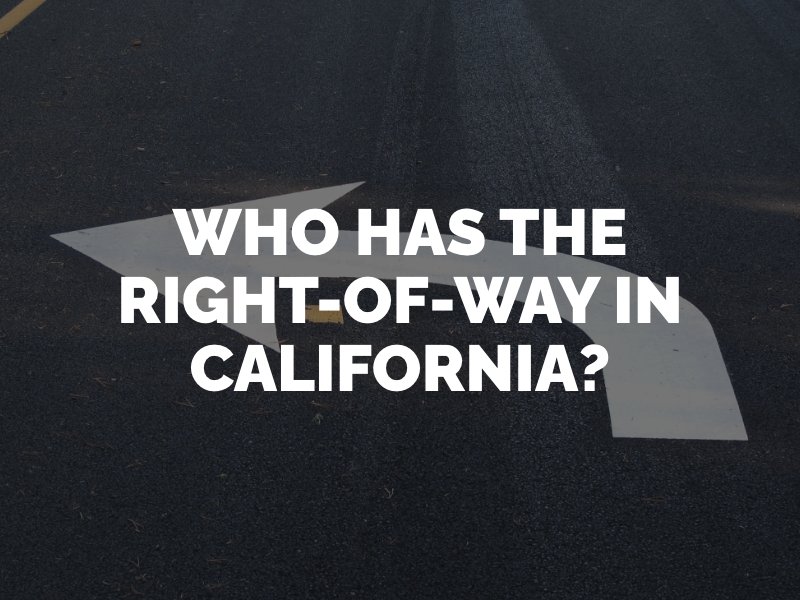California’s Right-of-Way Laws Explained
Car accidents in Los Angeles are often caused by a driver failing to obey a traffic law. Rights-of-way laws exist to prevent two motor vehicles from crossing paths. They determine when roadway users – including motorists, bicyclists and pedestrians – have the legal right to enter a roadway, such as to proceed across an intersection. If a driver violates California’s right-of-way laws, he or she can be held liable for a related car accident.

What is the Right-of-Way?
Right-of-way laws keep traffic flowing smoothly in California. The right-of-way refers to permission to proceed. If a driver does not have the right-of-way, it means he or she is not permitted to proceed and should instead yield to others. This is also true of pedestrians. Pedestrians do not automatically have the right-of-way in California; instead, they must obey applicable right-of-way rules and traffic control devices as necessary.
If a road user does not have the right-of-way, he or she must come to a complete stop and allow the drivers or road users with the right-of-way to proceed. Only when the road is clear and it is safe to do so can a driver proceed without the right-of-way. However, even when a driver has the right-of-way, he or she should remain alert to avoid car accidents. Many drivers violate California’s right-of-way laws.
What Are California’s Right-of-Way Laws?
The “right-of-way” is defined in California Vehicle Code, Sections 21800-21807, Chapter 4. This law states that the driver of a vehicle approaching an intersection must yield the right-of-way to any vehicle that has entered the intersection from a different highway. This law – and other state regulations – have a variety of rules that further explain rights-of-way in different situations. They include:
- Traffic control signals. Section 7 of the California Driver’s Handbook states that when approaching a traffic signal or sign, a driver must yield to pedestrians, bicyclists and other nearby vehicles that may have the right-of-way. At a stoplight, drivers with the right-of-way are faced with steady green lights.
- Stop signs and four-way intersections. At a stop sign, the driver that approaches the intersection first has the right-of-way. If two vehicles approach an intersection from different highways at the same time, the driver on the left must yield to the driver on the right.
- Flashing yellow or red lights. If a traffic control signal is showing a flashing yellow light, it is a warning to slow down and proceed with caution. A flashing red light requires drivers to stop and only proceed when it is safe, such as at a stop sign.
- Pedestrian right-of-way laws. Pedestrians automatically have the right-of-way to cross the road at unmarked intersections and crosswalks. At intersections with traffic control devices, however, they may only proceed at a green light or with the “Walk” symbol. A pedestrian also cannot step into the road when a vehicle is approaching closely enough to constitute an immediate threat.
- Pedestrian jaywalking law. California Vehicle Code, Section 21955 states that a pedestrian shall not cross the roadway at any place except in a crosswalk between adjacent intersections that are controlled by traffic control devices. This infraction is also known as jaywalking.
Every road user has a responsibility to obey right-of-way laws and traffic signs and signals in California. If a driver violates a right-of-way law and causes a car accident, such as a collision in an intersection, he or she will be responsible for paying for the wreck. If you get involved in this type of traffic accident, contact an attorney to help you prove that the other driver broke the law and is liable for your damages.
